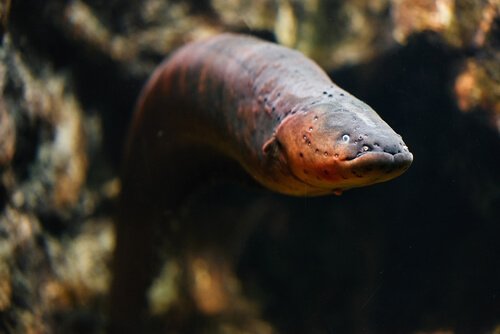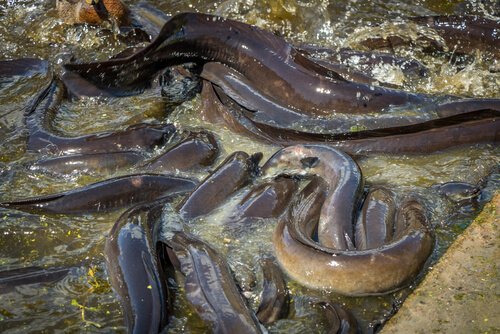The eels
The eels, which are currently so prized in the food market, are the fry of the eels. In some places they are also known by names like raul or rula, and it is the only fry type allowed by the current Spanish fishing laws.
Next, we invite you to learn more about eels and eels, their physical characteristics, their life cycle and habitat.
Morphological aspects of eels and eels
As we have mentioned, eels can be considered as eels 'offspring': they are in their early stages of development. Although they are in constant growth, the elvers that are usually commercialized are small and light, five or six centimeters in length.
Similar to what happens with eels, eels are characterized by an elongated and smooth body, which lacks scales . Originally, the fry are transparent and change color according to their growth and the environment where they live.
The yellow eels, for example, are transparent in their fry stage and are adopting a brown color. on your back as they develop. Then they change to a green color in their adult phase and, finally, they turn silver in their mature phase.
However, commercial eels may have a white, gray or slightly black color
strong>. This happens because pre-cooked and non-live eels are usually marketed to preserve them better and prevent them from rotting.
Eel life cycle
Eels belong to the order of the anguiliformes, which include very special teleost fish, such as eels, moray eels and conger eels. All species of eels make up a single suborder, called Anguilloidei , in which we find river eels, mud eels and noodle eels.

The common European eel ( Anguilla anguilla ), as well as all river eels, is a species of euryhaline fish. This means that develops certain stages of its life cycle in salty waters, and others in freshwater.
A large part of the eels migrate to the rivers after their development in salty waters. Shortly after its birth, the fry begin their first migration to the fluvial beds. At this moment the most important metamorphosis of the life cycle of these species occurs, and they become eels.
Reproduction and sex determination of eels
One of the most curious facts about eels is that they are all females during the first phases of their life cycle strong>. That is, all eels are female, so it is impossible to find eel male fry.

When reaching sexual maturity, some eels can change sex to guarantee the reproduction of their species. It is estimated that water salinity plays a fundamental role in determining the sex of eels , since only females undertake the journey to rivers to spawn.
Near One year after experiencing its metamorphosis, with the arrival of spring, the eels embark on a new migration to the Sargasso Sea, where reproduction occurs.
This migration marks its arrival at the reproductive maturity and the conclusion of the stages of development of its life cycle. In this migration, male and female eels are already observed.Therefore, this continues to be one of the 'mysteries' that nature reserves us about these peculiar fish.
Last but not least, it should be noted that eels are omnivorous fish . Its diet is based on the consumption of worms, insects, molluscs, crustaceans and small fish.


